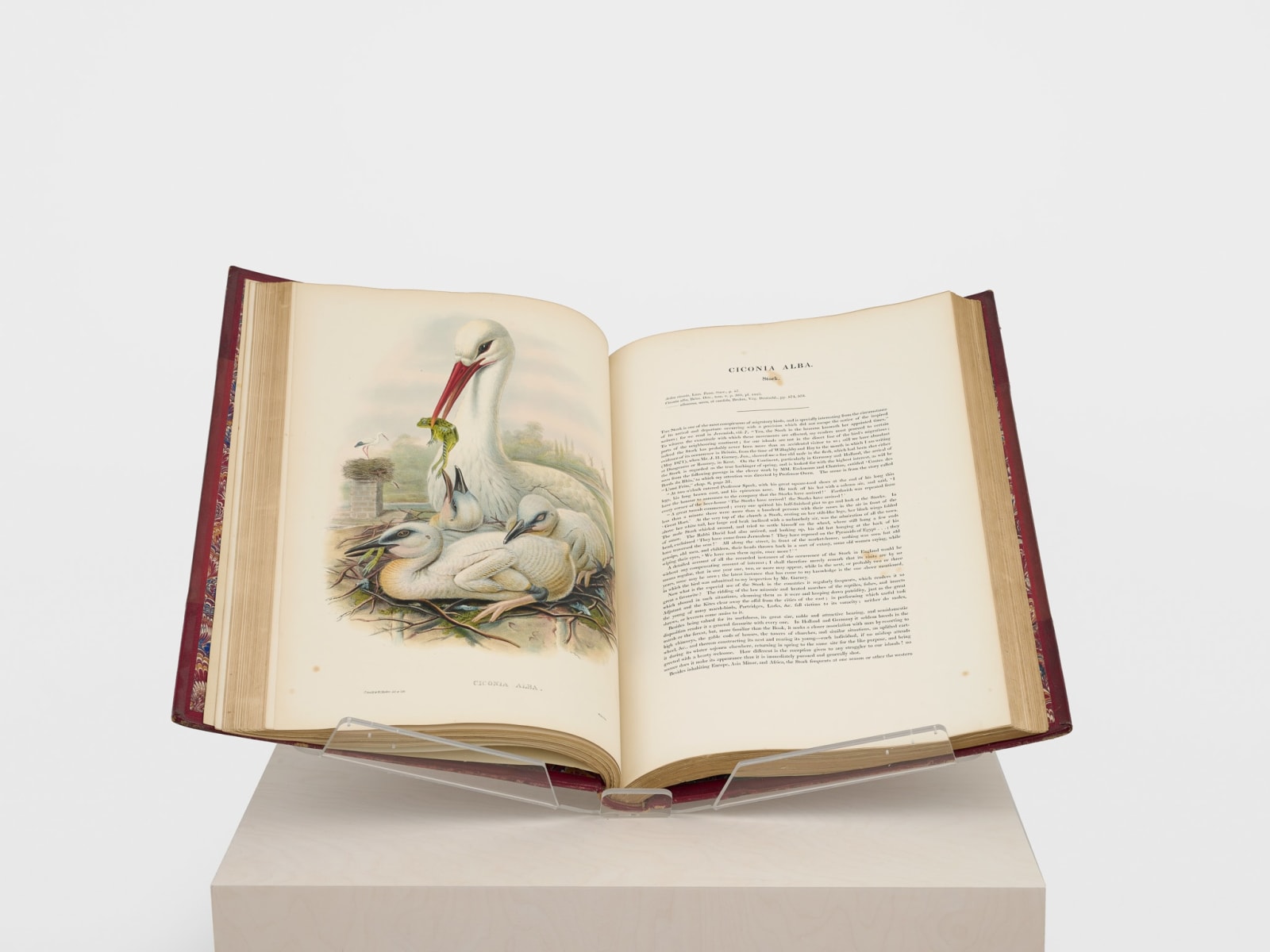John Gould
The Birds of Great Britain (First Edition, 5 Volumes), 1873
Book
56 x 38 cm
22 x 14,9 in
22 x 14,9 in
GOJ0001
Copyright The Artist
Further images
John Gould's most popular and perhaps finest work, and his first collaborative work with Josef Wolf. The German natural history painter Josef Wolf brought to Gould's monographs a realistic vigour...
John Gould's most popular and perhaps finest work, and his first collaborative work with Josef Wolf. The German natural history painter Josef Wolf brought to Gould's monographs a realistic vigour and sensibility of nature lacking in the work of many of Gould's studio artists. ‘All of Wolf's plates represent a moment of suspended action. Gone are the stilted tableaux of birds frozen in profile purely for the sake of identification; Wolf's birds all bear the mark of the character of the species. ‘You know’, remarked Wolf, ‘I make a distinction between a picture in which there is an idea, and the mere representation of a bird’(Isabella Tree: The Ruling Passion of John Gould).‘
Such beautiful illustrations as those of the birds of Great Britain scarcely existed before and are not likely to be surpassed’ (R. Bowdler Sharpe).
Gould was especially proud of this work, and it was seen - perhaps partly because its subject was British, as the culmination of [his]... genius’ (Isabella Tree, The Ruling Passion of John Gould, London, 1991, p. 207). The work was issued in twenty-five parts and from the outset was well received, as was reflected in the unusually large number of subscribers. Gould stresses its difference from the earlier Birds of Europe in the treatment of the illustrations, the inclusion of figures of young birds and nests, and the more extensive text. In his preface, Gould commented on the colouring of the plates: ‘Many of the public are quite unaware how the colouring of these large plates is accomplished; and not a few believe that they are produced by some mechanical process or by chromo-lithography. This, however, is not the case; every sky with its varied tints and every feather of each bird were coloured by hand; and when it is considered that nearly two hundred and eighty thousand illustrations in the present work have been so treated, it will most likely cause some astonishment to those who give the subject a thought’. Elsewhere he remarked upon employing ‘almost all the colourists in London’.
Such beautiful illustrations as those of the birds of Great Britain scarcely existed before and are not likely to be surpassed’ (R. Bowdler Sharpe).
Gould was especially proud of this work, and it was seen - perhaps partly because its subject was British, as the culmination of [his]... genius’ (Isabella Tree, The Ruling Passion of John Gould, London, 1991, p. 207). The work was issued in twenty-five parts and from the outset was well received, as was reflected in the unusually large number of subscribers. Gould stresses its difference from the earlier Birds of Europe in the treatment of the illustrations, the inclusion of figures of young birds and nests, and the more extensive text. In his preface, Gould commented on the colouring of the plates: ‘Many of the public are quite unaware how the colouring of these large plates is accomplished; and not a few believe that they are produced by some mechanical process or by chromo-lithography. This, however, is not the case; every sky with its varied tints and every feather of each bird were coloured by hand; and when it is considered that nearly two hundred and eighty thousand illustrations in the present work have been so treated, it will most likely cause some astonishment to those who give the subject a thought’. Elsewhere he remarked upon employing ‘almost all the colourists in London’.
2
of
2
Join our mailing list
* denotes required fields
We will process the personal data you have supplied in accordance with our privacy policy (available on request). You can unsubscribe or change your preferences at any time by clicking the link in our emails.













